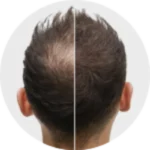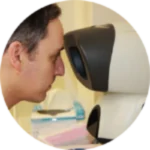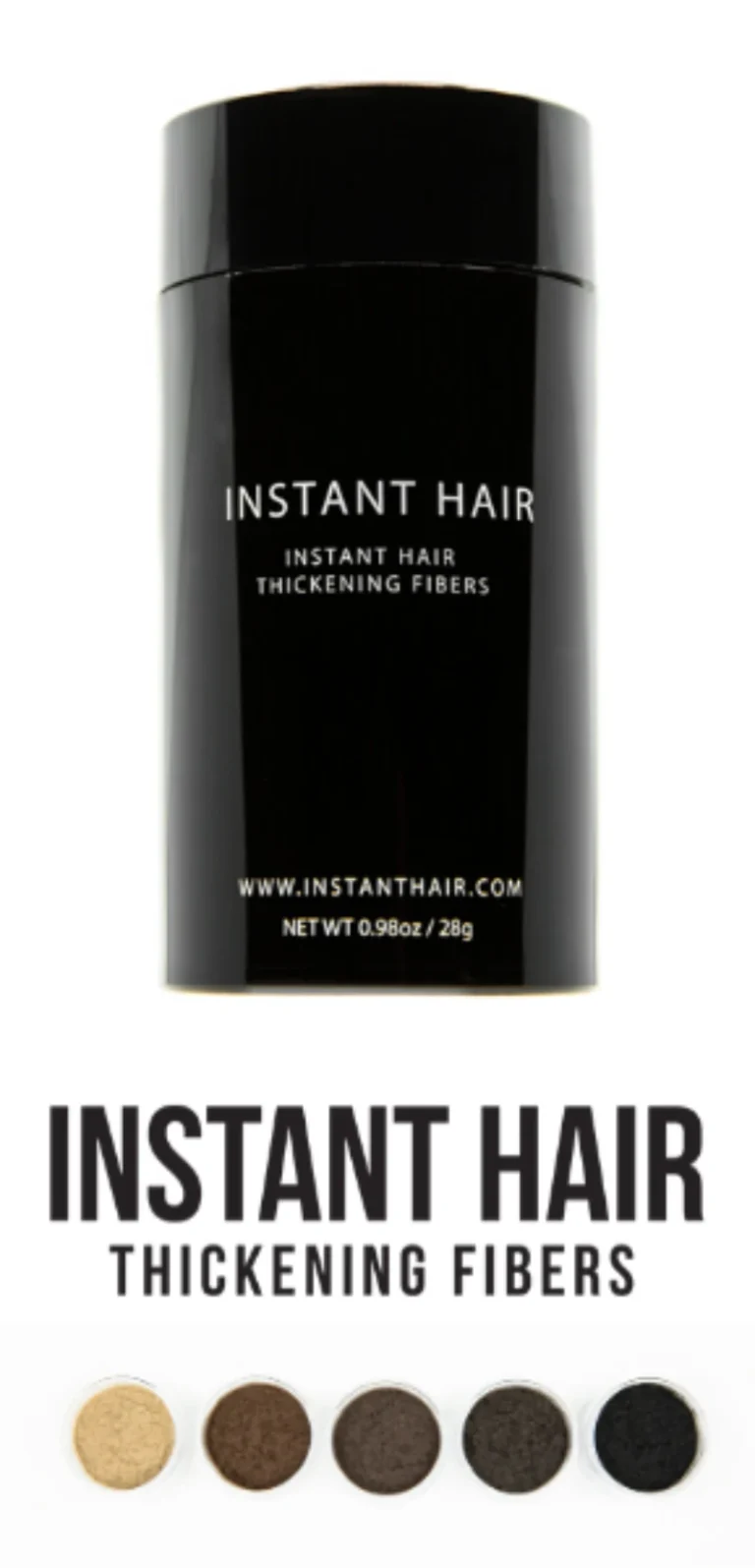Hair Transplant Options
The media has perpetuated many rumours and myths about hair transplants. Many people worry that their hair transplants will look fake. However, hair transplants can be very effective and can also look extremely natural when done by an experienced doctor.

- Home
- Hair Loss Solutions
- Surgical Hair Loss Solutions
- Hair Transplant Options

Toronto Hair Transplant Surgeons are internationally known for our pioneering work in hair transplantation.
Hair Transplant Options
Understanding your choices for reversing hair loss
There’s a lot of misinformation out there about hair transplants. Use the information below to separate fact from fiction and become a more informed consumer.
IS A HAIR TRANSPLANT RIGHT FOR ME?
People who are dealing with hair loss often panic and look for a quick-fix solution. This is understandable, but getting a hair transplant should not be a snap decision. Below are some of the most important things you need to consider.
- How severe is your hair loss? If your hair loss is mild, getting a hair transplant might be overkill. It’s important to know that after your first get a hair transplant, there can be some shock loss and it takes a while for the newly transplanted hair to grow in. Therefore, hair transplants are much better suited to those with moderate to severe hair loss.
- When did you first notice it? If you’ve only just noticed your hair thinning, it’s important not to panic and consider all your options first. Getting a hair transplant is usually something people take a long time to think about.
- Have you tried treatments? This is one of the most important questions to ask yourself. There are proven treatments available for tackling hair loss, and if they work well for you, you might have no reason to get a hair transplant.
Our Results

Toronto Hair Transplant Surgeons are internationally known for our pioneering hair transplantation work.
Our huge archive is here to help you see what we can do for you. Use the link below to view some sample cases.
TYPES OF HAIR TRANSPLANTS
- FUE – Follicular Unit Excision (FUE) hair transplants are one of the two main procedures used today. With an FUE procedure, hair follicles are individually extracted donor areas including the back and sides of the patient’s head and transplanted to the recipient area (where the hair is thinning).
- FUT – Follicular Unit Transplantation (FUT) differs from FUE in that the donor hair is extracted in a strip, rather than individually. This is why FUT is often referred to as a “strip procedure.” Although both procedures are effective, FUT is more invasive and can leave a visible scar on the back of the head, meaning it might not be the best option for those who want to cut their hair short. The size of the scar can greatly vary depending on the skill of the surgeon and the Toronto Hair Transplant Surgeons is proud to be a specialist in helping with scar reductions for patients who had work done outside of our clinic.
Do hair transplants provide natural results?
A big fear that a lot of people have about hair transplants is that they’ll look phoney. This fear is unfounded, however, since modern transplant techniques are very refined and make use of individual hair follicles, providing extremely natural-looking results.
What are the risks?
Generally, the risks associated with hair transplants are very low. The most important thing to realize is that when the new hair is transplanted, it will fall out at first and then grow back. This is a completely normal part of the process but it’s certainly worth knowing since some individuals can be disturbed by this if they’re not aware of it.
THTS Gallery

Familiarize yourself with our layout before you come in.
Visit the gallery to take a peek at our Oakville based clinic layout and surgical rooms.
Exploring The Future of Hair Transplantation
Plenty of research is ongoing in the field in an effort to invent newer and sophisticated techniques that could provide improved results. Currently FUE technique is the most popular hair transplantation method, and newer techniques are under research and evolving.
Two evolving methods in the field of hair transplantation are hair cloning and gene therapy. Gene therapy is based upon the principle of injecting new DNA into the hair cells of the patient. The new DNA injected into the hair cells will prevent the cells to be affected by DHT hormone, which is considered the ultimate reason for causing male pattern baldness. Gene therapy research is in preliminary stages.
Hair cloning is an evolving technology that sounds very promising to hair loss sufferers. Simply put, hair cloning is a hair growth technique based upon tissue based hair growth. Hair follicles are retrieved from the donor areas of the scalp and these tissues are replicated in a laboratory setting. Though there is plenty of ongoing debate as to how successful hair cloning can be, the technique offers the capability of growing multiple hairs from a single hair follicle. Again this method needs a lot of research to be completed before it is recognized as a standard hair restoration procedure.
Though the future of the hair transplantation industry looks promising with plenty of research being carried on, the new techniques may exceed the conventional FUE or strip methods of hair transplantation.
SURGICAL HAIR REPLACEMENT OPTIONS
These two procedures are considered state-of-the-art by the majority of hair replacement surgeons worldwide.
1. Follicular Unit Transplantation (FUT)
This procedure involves removing a strip of hair from the back of the head (the permanent donor hair) and dividing it under a microscope into “follicular units”. This hair is then planted into small needle holes. About 60 or 70 grafts can be planted per square centimetre, allowing for a density that approaches that of naturally grown hair.
When the procedure is done properly, it will produce a completely natural appearance. By “properly”, we mean that the graft density is full and that the hairline has been designed accurately, and with aesthetic consideration. Many patients voice concern about the scar left across the donor site with this procedure. This concern is easily mitagated by our skilled surgeons whose expertise and precision helps to minimize all scarring to the extent it is possible.
2. Follicular Unit Excision (FUE)
The concept is simple. Grafts are removed using a tiny punch, which varies its depth and angle according to the follicle. Once the punch releases the graft, it can easily be removed with forceps. The downside of this technique is that it requires a lot of work and practice on the part of the doctor, as removing the grafts can be quite difficult in some patients, and it requires the patient to buzz their head. (For women or men with long hair, you can get away with buzzing just a strip on the back of the head to use as a donor area.) We have now performed enough FUE procedures that we can easily extract 1,500 to 3,000 grafts in one day, but it is an incredibly tedious and time-consuming procedure, and it is for this reason that it is so expensive — two to three times as expensive as a FUT.
Another advantage of FUE is the possibility of extracting body hair. When performing a FUT on a patient with a limited donor site, we often remove several hundred hairs from the body (chest, abdomen, back, etc.), allowing for more hair to be transplanted. It is the last resort for patients with minimal hair in donor sites on the head. FUE heals very quickly.
HAIR TREATMENT METHODS
Although most consider hair transplantation to be the best solution to overcome baldness, there are certainly some complementary treatments. Additionally, we’ve all heard of ineffective or disastrous treatments in some form or another. We felt it necessary to address the more prominent of the good and the bad.
Methods of Treatment
- Micro Follicular Excision, also called Follicular Unit Extraction (FUE)
- Strip Excision (FUT)
- Lotions and Chemicals
- Platelet Rich Plasma Therapy (PRP)
- Minoxidil
- Finasteride
- Low-Level Laser Therapy
Alternative Hair Treatments: Surgeries
- Scalp Reduction
- Flaps
- Scalp Lifts and Tissue Expansion
- Other Options
Strip Incision Hair Transplants
When a strip of hair is taken from a donor area in order to be transplanted in areas of thinning or non-existent hair, a fine linear scar may remain. Surgeons minimize the risk of a visible scar in various ways.
ULTRAFINE GRAFTING TECHNIQUE
Our Toronto Hair Transplant Surgeons doctor’s use the ultrafine grafting technique for hair transplants. This means that all grafts are dissected under the binocular microscope. This gives the most natural results available because each graft is in a follicular unit of one to three follicles mimicking how they grow naturally.
SCAR REPAIR HAIR RESTORATION TECHNIQUE
Depending on the type of hair restoration technique performed, the physician’s experience, and the amount of tissue removed, scar results will vary. Some scars are small and easy to hide, while others may be in need of additional scar repair.
After multiple procedures, wide scars can become visible and unsightly, needing either revision or planting with Follicular Unit Excision (FUE).
In terms of technique, strip incisions leave recognizably different scars than follicular unit excisions. Strip incision techniques will leave a linear scar on the scalp, while follicular unit excision leaves 1mm, round-shaped scars around the donor areas. Scars caused by follicular unit excision are less visible than scars caused by other techniques. Visibility of scars also depends on the patient’s hair length and the experience of the physician.
There are two methods of scar repair used on patients: scar revision with suture and placement of follicular unit excision into the scar.
1. Scar Revision with Suture
This is a method of scar repair that involves improving the appearance of the scar. If there is not too much tension on the scar, an attempt can be made at excising the scar and resuturing it. Every effort must be made to minimize any tension on the scar as “stretch back” or reopening will occur.
Generally, there is a 90% chance that the scar will improve with scar revision. Other possibilities include a 9% chance that the scar will remain the same and a small 1% chance that the scar will be worse.
2. Placement of FUE into Scar
This has become a very popular means of scar repair. It involves removing hair from the body or head and placing it into the scar tissue at the back of the head. Usually, 50% to 90% of the grafts grow in scars, making the scarred areas of the scalp much less visible.
Scar Repair Using ACell
A biotechnology company called ACell has created a product that regenerates the skin of scars with normal hair follicles. The product is a basement membrane that allows for epithelial cell growth, or more simply skin regeneration. The raw concept is to stimulate the bodies’ natural processes to re-grow damaged skin. The idea is that since this regeneration is natural it won’t be rejected by the body. They also wanted it to be absorbable so there’s no trace and completely natural to the patient’s body.
ACell is a product that has been used in Veterinary medicine for years. It caught the interest of our doctors because it not only regenerates skin, but regenerates skin with normal hair follicles. Further, Acell has been approved for wound care in humans, and in patients where it has been used, the hair follicles regenerate as well as the skin.
The Perfect Testing Ground for ACell
Dr Jones received a patient who had many hair transplant procedure in the past. The back of his scalp revealed that the graph procedures, three scalp reductions and two strip surgeries had left scars. The work was performed on the patient over 10 years ago and had left train track like scarring including a nasty scar measuring over 5 cm long.
Seeing the Potential of ACell
Dr Jones realized that he had the right patient for the trial of this procedure. He got a few samples of Acell and went to work on the scar repair. Dr Jones said of the procedure:
“The question is whether or not the hair will regenerate as it does in animals or as it does in human wound care on other areas of the body… I immediately wondered what great things this would do to help repair patients old scars and I couldn’t help but imagine that using Acell in the hair transplant procedure would possibly produce an undetectable scar, and perhaps to even regenerate the donor area.”




